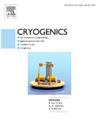Comparative study of threshold voltage extraction methods for 55 nm CMOS technology at liquid helium temperature
IF 2.1
3区 工程技术
Q3 PHYSICS, APPLIED
引用次数: 0
Abstract
Accurate determination of threshold voltage () is critical for MOSFET characterization and modeling, especially for emerging applications in cryogenic electronics, such as quantum computing and advanced scientific instrumentation. This paper presents a systematic comparative evaluation of multiple threshold voltage extraction methods applied to a commercial 55 nm bulk CMOS technology at liquid helium temperature (4 K). We examine and adapt conventional extraction techniques—including Constant Current (CC), Linear Extrapolation (LE), Y-function (Yfunc), Transconductance Linear Extrapolation (GMLE), Second Derivative (SD), Third Derivative (TD), Transition-based (TM, NMID, NRH), and Transconductance-to-Current Ratio (TCR)-based methods—and assess their performance in terms of consistency, robustness against measurement noise, and applicability at cryogenic temperatures. Results indicate significant method-dependent variability in extracted threshold values at 4 K, reflecting fundamental differences in how each method handles cryogenic-specific effects such as dopant freeze-out and mobility variations. Through careful comparative analysis, we identify the most reliable and accurate extraction methods for low-temperature conditions, specifically SD, LE, TM, TD, GMLE, fitLE (fitted linear extrapolation), and Y-function, offering practical recommendations to improve device modeling accuracy and reliability for cryogenic CMOS circuits.
55 nm CMOS工艺在液氦温度下阈值电压提取方法的比较研究
准确确定阈值电压(Vth)对于MOSFET的表征和建模至关重要,特别是对于低温电子领域的新兴应用,如量子计算和先进的科学仪器。本文提出了应用于商用55nm块体CMOS技术的多种阈值电压提取方法在液氦温度(~ 4 K)下的系统比较评估。我们研究并调整了传统的提取技术,包括恒流(CC)、线性外推(LE)、y函数(Yfunc)、跨导线性外推(GMLE)、二阶导数(SD)、三阶导数(TD)、基于过渡(TM、NMID、NRH)和基于跨导电流比(TCR)的方法,并评估了它们在一致性、对测量噪声的鲁棒性以及在低温下的适用性方面的性能。结果表明,在4 K时提取的阈值存在显著的方法依赖差异,反映了每种方法在处理掺杂剂冻结和迁移率变化等低温特异性效应方面的根本差异。通过仔细的对比分析,我们确定了在低温条件下最可靠和准确的提取方法,特别是SD, LE, TM, TD, GMLE, fitLE(拟合线性外推)和y函数,为提高低温CMOS电路的器件建模精度和可靠性提供了实用建议。
本文章由计算机程序翻译,如有差异,请以英文原文为准。
求助全文
约1分钟内获得全文
求助全文
来源期刊

Cryogenics
物理-热力学
CiteScore
3.80
自引率
9.50%
发文量
0
审稿时长
2.1 months
期刊介绍:
Cryogenics is the world''s leading journal focusing on all aspects of cryoengineering and cryogenics. Papers published in Cryogenics cover a wide variety of subjects in low temperature engineering and research. Among the areas covered are:
- Applications of superconductivity: magnets, electronics, devices
- Superconductors and their properties
- Properties of materials: metals, alloys, composites, polymers, insulations
- New applications of cryogenic technology to processes, devices, machinery
- Refrigeration and liquefaction technology
- Thermodynamics
- Fluid properties and fluid mechanics
- Heat transfer
- Thermometry and measurement science
- Cryogenics in medicine
- Cryoelectronics
 求助内容:
求助内容: 应助结果提醒方式:
应助结果提醒方式:


